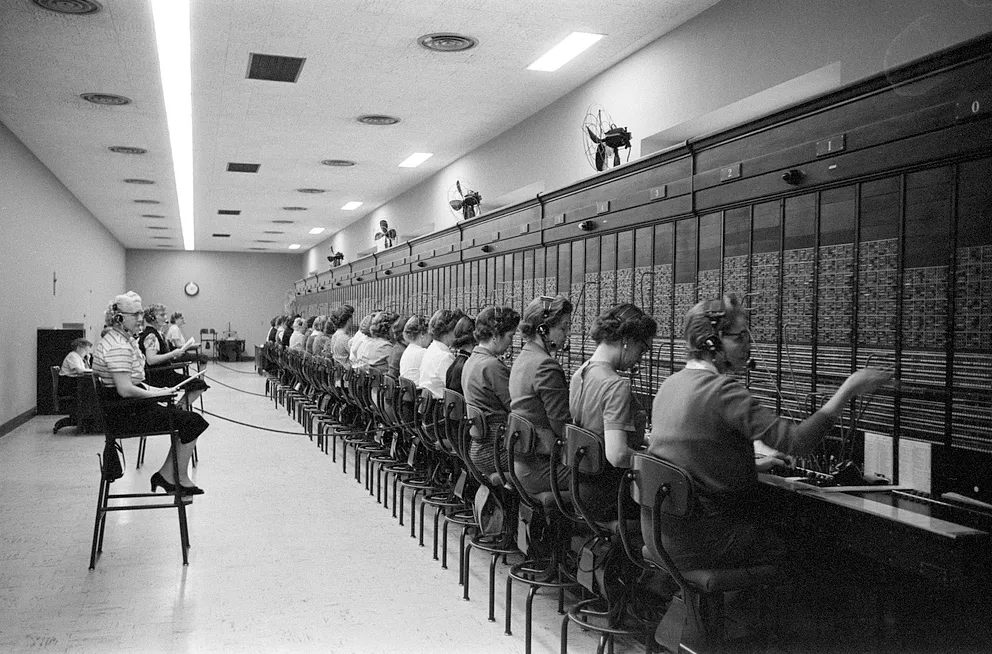By: Janet Yellen
As we celebrate the centennial of the 19th Amendment, giving women the right to vote, we should also celebrate the major strides women have made in the labor market. Their entry into paid work has been a major factor in America’s prosperity over the past century and a quarter.
Despite this progress, evidence suggests that many women remain unable to achieve their goals. The gap in earnings between women and men, although smaller than it was years ago, is still significant; women continue to be underrepresented in certain industries and occupations; and too many women struggle to combine aspirations for work and family. Further advancement has been hampered by barriers to equal opportunity and workplace rules and norms that fail to support a reasonable work-life balance. If these obstacles persist, we will squander the potential of many of our citizens and incur a substantial loss to the productive capacity of our economy at a time when the aging of the population and weak productivity growth are already weighing on economic growth.
A historical perspective on women in the labor force
In the early 20th century, most women in the United States did not work outside the home, and those who did were primarily young and unmarried. In that era, just 20 percent of all women were “gainful workers,” as the Census Bureau then categorized labor force participation outside the home, and only 5 percent of those married were categorized as such. Of course, these statistics somewhat understate the contributions of married women to the economy beyond housekeeping and childrearing, since women’s work in the home often included work in family businesses and the home production of goods, such as agricultural products, for sale. Also, the aggregate statistics obscure the differential experience of women by race. African American women were about twice as likely to participate in the labor force as were white women at the time, largely because they were more likely to remain in the labor force after marriage.
If these obstacles persist, we will squander the potential of many of our citizens and incur a substantial loss to the productive capacity of our economy at a time when the aging of the population and weak productivity growth are already weighing on economic growth.
The fact that many women left work upon marriage reflected cultural norms, the nature of the work available to them, and legal strictures. The occupational choices of those young women who did work were severely circumscribed. Most women lacked significant education—and women with little education mostly toiled as piece workers in factories or as domestic workers, jobs that were dirty and often unsafe. Educated women were scarce. Fewer than 2 percent of all 18- to 24-year-olds were enrolled in an institution of higher education, and just one-third of those were women. Such women did not have to perform manual labor, but their choices were likewise constrained.
Despite the widespread sentiment against women, particularly married women, working outside the home and with the limited opportunities available to them, women did enter the labor force in greater numbers over this period, with participation rates reaching nearly 50 percent for single women by 1930 and nearly 12 percent for married women. This rise suggests that while the incentive—and in many cases the imperative—remained for women to drop out of the labor market at marriage when they could rely on their husband’s income, mores were changing. Indeed, these years overlapped with the so-called first wave of the women’s movement, when women came together to agitate for change on a variety of social issues, including suffrage and temperance, and which culminated in the ratification of the 19th Amendment in 1920 guaranteeing women the right to vote.
Between the 1930s and mid-1970s, women’s participation in the economy continued to rise, with the gains primarily owing to an increase in work among married women. By 1970, 50 percent of single women and 40 percent of married women were participating in the labor force. Several factors contributed to this rise. First, with the advent of mass high school education, graduation rates rose substantially. At the same time, new technologies contributed to an increased demand for clerical workers, and these jobs were increasingly taken on by women. Moreover, because these jobs tended to be cleaner and safer, the stigma attached to work for a married woman diminished. And while there were still marriage bars that forced women out of the labor force, these formal barriers were gradually removed over the period following World War II.

Over the decades from 1930 to 1970, increasing opportunities also arose for highly educated women. That said, early in that period, most women still expected to have short careers, and women were still largely viewed as secondary earners whose husbands’ careers came first.
As time progressed, attitudes about women working and their employment prospects changed. As women gained experience in the labor force, they increasingly saw that they could balance work and family. A new model of the two-income family emerged. Some women began to attend college and graduate school with the expectation of working, whether or not they planned to marry and have families.
By the 1970s, a dramatic change in women’s work lives was under way. In the period after World War II, many women had not expected that they would spend as much of their adult lives working as turned out to be the case. By contrast, in the 1970s young women more commonly expected that they would spend a substantial portion of their lives in the labor force, and they prepared for it, increasing their educational attainment and taking courses and college majors that better equipped them for careers as opposed to just jobs.
These changes in attitudes and expectations were supported by other changes under way in society. Workplace protections were enhanced through the passage of the Pregnancy Discrimination Act in 1978 and the recognition of sexual harassment in the workplace. Access to birth control increased, which allowed married couples greater control over the size of their families and young women the ability to delay marriage and to plan children around their educational and work choices. And in 1974, women gained, for the first time, the right to apply for credit in their own name without a male co-signer.
By the early 1990s, the labor force participation rate of prime working-age women—those between the ages of 25 and 54—reached just over 74 percent, compared with roughly 93 percent for prime working-age men. By then, the share of women going into the traditional fields of teaching, nursing, social work, and clerical work declined, and more women were becoming doctors, lawyers, managers, and professors. As women increased their education and joined industries and occupations formerly dominated by men, the gap in earnings between women and men began to close significantly.
Remaining challenges and some possible solutions
We, as a country, have reaped great benefits from the increasing role that women have played in the economy. But evidence suggests that barriers to women’s continued progress remain. The participation rate for prime working-age women peaked in the late 1990s and currently stands at about 76 percent. Of course, women, particularly those with lower levels of education, have been affected by the same economic forces that have been pushing down participation among men, including technical change and globalization. However, women’s participation plateaued at a level well below that of prime working-age men, which stands at about 89 percent. While some married women choose not to work, the size of this disparity should lead us to examine the extent to which structural problems, such as a lack of equal opportunity and challenges to combining work and family, are holding back women’s advancement.
Recent research has shown that although women now enter professional schools in numbers nearly equal to men, they are still substantially less likely to reach the highest echelons of their professions.
The gap in earnings between men and women has narrowed substantially, but progress has slowed lately, and women working full time still earn about 17 percent less than men, on average, each week. Even when we compare men and women in the same or similar occupations who appear nearly identical in background and experience, a gap of about 10 percent typically remains. As such, we cannot rule out that gender-related impediments hold back women, including outright discrimination, attitudes that reduce women’s success in the workplace, and an absence of mentors.
Recent research has shown that although women now enter professional schools in numbers nearly equal to men, they are still substantially less likely to reach the highest echelons of their professions. Even in my own field of economics, women constitute only about one-third of Ph.D. recipients, a number that has barely budged in two decades. This lack of success in climbing the professional ladder would seem to explain why the wage gap actually remains largest for those at the top of the earnings distribution.
One of the primary factors contributing to the failure of these highly skilled women to reach the tops of their professions and earn equal pay is that top jobs in fields such as law and business require longer workweeks and penalize taking time off. This would have a disproportionately large effect on women who continue to bear the lion’s share of domestic and child-rearing responsibilities.
But it can be difficult for women to meet the demands in these fields once they have children. The very fact that these types of jobs require such long hours likely discourages some women—as well as men—from pursuing these career tracks. Advances in technology have facilitated greater work-sharing and flexibility in scheduling, and there are further opportunities in this direction. Economic models also suggest that while it can be difficult for any one employer to move to a model with shorter hours, if many firms were to change their model, they and their workers could all be better off.
Of course, most women are not employed in fields that require such long hours or that impose such severe penalties for taking time off. But the difficulty of balancing work and family is a widespread problem. In fact, the recent trend in many occupations is to demand complete scheduling flexibility, which can result in too few hours of work for those with family demands and can make it difficult to schedule childcare. Reforms that encourage companies to provide some predictability in schedules, cross-train workers to perform different tasks, or require a minimum guaranteed number of hours in exchange for flexibility could improve the lives of workers holding such jobs. Another problem is that in most states, childcare is affordable for fewer than half of all families. And just 5 percent of workers with wages in the bottom quarter of the wage distribution have jobs that provide them with paid family leave. This circumstance puts many women in the position of having to choose between caring for a sick family member and keeping their jobs.
This possibility should inform our own thinking about policies to make it easier for women and men to combine their family and career aspirations. For instance, improving access to affordable and good quality childcare would appear to fit the bill, as it has been shown to support full-time employment. Recently, there also seems to be some momentum for providing families with paid leave at the time of childbirth. The experience in Europe suggests picking policies that do not narrowly target childbirth, but instead can be used to meet a variety of health and caregiving responsibilities.
Conclusion
The United States faces a number of longer-term economic challenges, including the aging of the population and the low growth rate of productivity. One recent study estimates that increasing the female participation rate to that of men would raise our gross domestic product by 5 percent. Our workplaces and families, as well as women themselves, would benefit from continued progress. However, a number of factors appear to be holding women back, including the difficulty women currently have in trying to combine their careers with other aspects of their lives, including caregiving. In looking to solutions, we should consider improvements to work environments and policies that benefit not only women, but all workers. Pursuing such a strategy would be in keeping with the story of the rise in women’s involvement in the workforce, which has contributed not only to their own well-being but more broadly to the welfare and prosperity of our country.
This essay is a revised version of a speech that Janet Yellen, then chair of the Federal Reserve, delivered on May 5, 2017 at the “125 Years of Women at Brown Conference,” sponsored by Brown University in Providence, Rhode Island. Yellen would like to thank Stephanie Aaronson, now vice president and director of Economic Studies at the Brookings Institution, for her assistance in the preparation of the original remarks. Read the full text of the speech here »
About the Author

Janet L. Yellen
Distinguished Fellow in Residence – Economic Studies, The Hutchins Center on Fiscal and Monetary Policy
Janet L. Yellen is a Distinguished Fellow in Residence with the Economic Studies Program at the Brookings Institution, as well as an adviser to the Magellan Group. Dr. Yellen previously served as Chair of the Federal Reserve Board (2014-2018), as Vice Chair of the Federal Reserve Board (2010-2014), as President and Chief Executive Officer of the Federal Reserve Bank of San Francisco (2004-2010), and as Chair of the White House Council of Economic Advisors (1997-1999). In 2012, Dr. Yellen was appointed Distinguished Fellow of the American Economic Association, for which she served as a Vice President (2004-2005), and where she is currently President of the Executive Committee.

